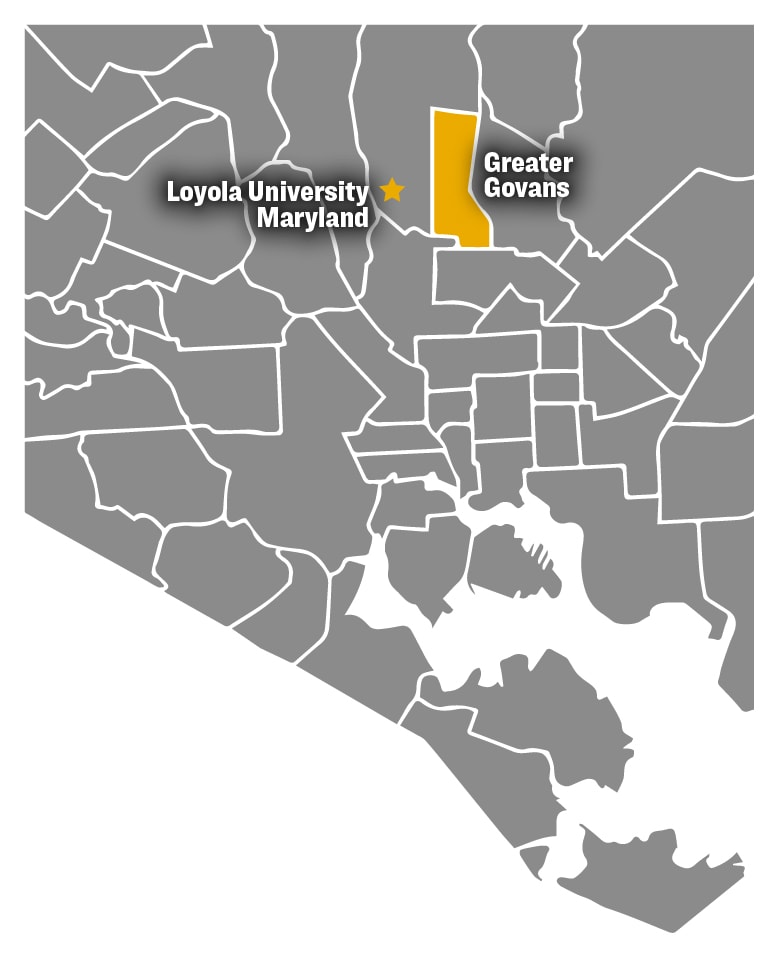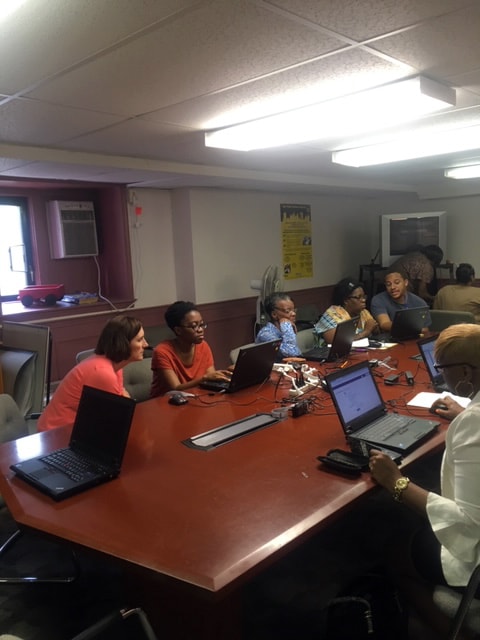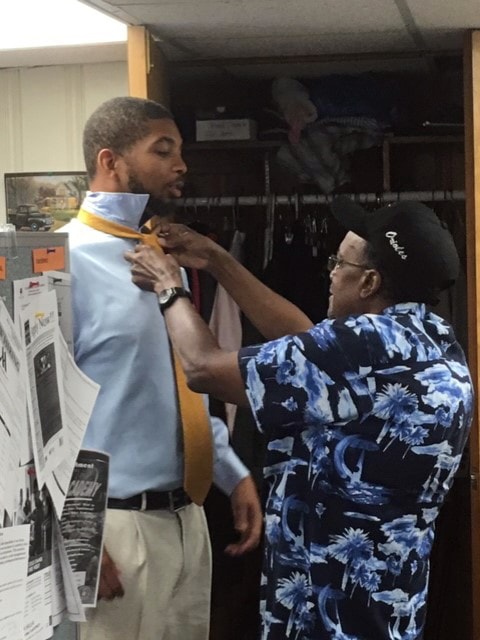Connecting with community through GEDCO/CARES
Two workforce assets join forces: individuals with years (often decades) of hands-on industry expertise and tech-savvy college students
Throughout the spring and the summer, a large part of me deeply, deeply missed Baltimore.
I still do, of course, but the pandemic sent me home a few weeks into my service-learning experience with GEDCO/CARES, just as I found myself truly connecting to the nearby Govans community through my work as a career counselor.

Situated on York Road, GEDCO/CARES is an organization offering employment services, financial assistance, and a food pantry to Govans residents. It is one of Loyola’s many community partners. Some students participate on their own through the Center for Community, Service, and Justice (CCSJ), but others—like myself and my peers—work with the organization through community engagement/service-learning tracks in select Loyola courses.
Each service-learning partnership varies based on the academic subject, with the aim to apply class knowledge to our experiences as we engage with the community, and vice-versa. My service-learning experiences, for example, have transpired via Technical Writing (SP20) and Writing for Web and Social Media (FA20) with Allen Brizee, Ph.D., associate professor of writing and Faculty Director for Community-Engaged Learning and Scholarship. These courses emphasize professional-style writing, so the skills I gain in the classroom (and via Zoom) match the need for résumé and cover letter writers with the aspiring professionals at GEDCO/CARES.
Since the pandemic truncated my time working with GEDCO/CARES in the spring, this fall marks my second semester volunteering at GEDCO/CARES. Our directors, Joe Santamaria and Rachel Neill, have been supportive and receptive in helping our cohort of student volunteers. Using Google Voice and Google Meet, we coordinate virtual meetings with clients who physically enter GEDCO at separate times each day. Typically, only one or two clients are there at once. When they arrive, Joe greets them before they begin a digital session with a volunteer, like me.
Despite the transition to online sessions, both the organization and its clients remain optimistic, persevering with remarkable flexibility.
Understandably, many clients fear the current digital divide and are self-conscious about being “out of touch,” believing this obstructs their chances of securing a job. Although companies are switching their application processes from paper to electronic, several Govans residents lack consistent, reliable access to the Internet. Many lack confidence in using platforms, software, and other applications that many job searches require. After all, how can you check your email for application updates if you don't have reliable Internet or know how to access your email?

 Volunteers and local community members collaborate using the technology available at GEDCO, and a volunteer helps a young professional with a necktie.
Volunteers and local community members collaborate using the technology available at GEDCO, and a volunteer helps a young professional with a necktie.
Two essential community assets join forces here: clients who have years (often decades) of hands-on industry expertise and tech-savvy student volunteers. We employ our own technological familiarity to connect this local workforce expertise with employers on the Internet. The resources at GEDCO—Internet, computers, and basic technological solutions, like creating, unlocking, and monitoring an email address—are integral pieces in connecting clients with an evolving work industry.
Removing the technological barriers between potential employment opportunities and clients' professional potential is essential in strengthening and mobilizing the Govans community.
Honestly, I didn't know what to expect when I started this work in January, but I knew I liked helping people. Each client has been friendly and gracious, especially now. They know you are taking the extra time to empower them, and you genuinely look forward to doing that—that’s what matters. The transparent and benevolent nature of the client-volunteer dynamic establishes itself as soon as you agree to be there for someone, and they trust you to help them in turn.
Most of my time is spent updating résumés, drafting cover letters, checking emails, and completing online job applications, but I quickly find myself getting excited in the process and actively rooting for clients after learning about their lives. Each person I work with recounts their story as we build their résumé. Their success feels like mine, too—and not even the transition to virtual sessions due to the pandemic can dampen that feeling.